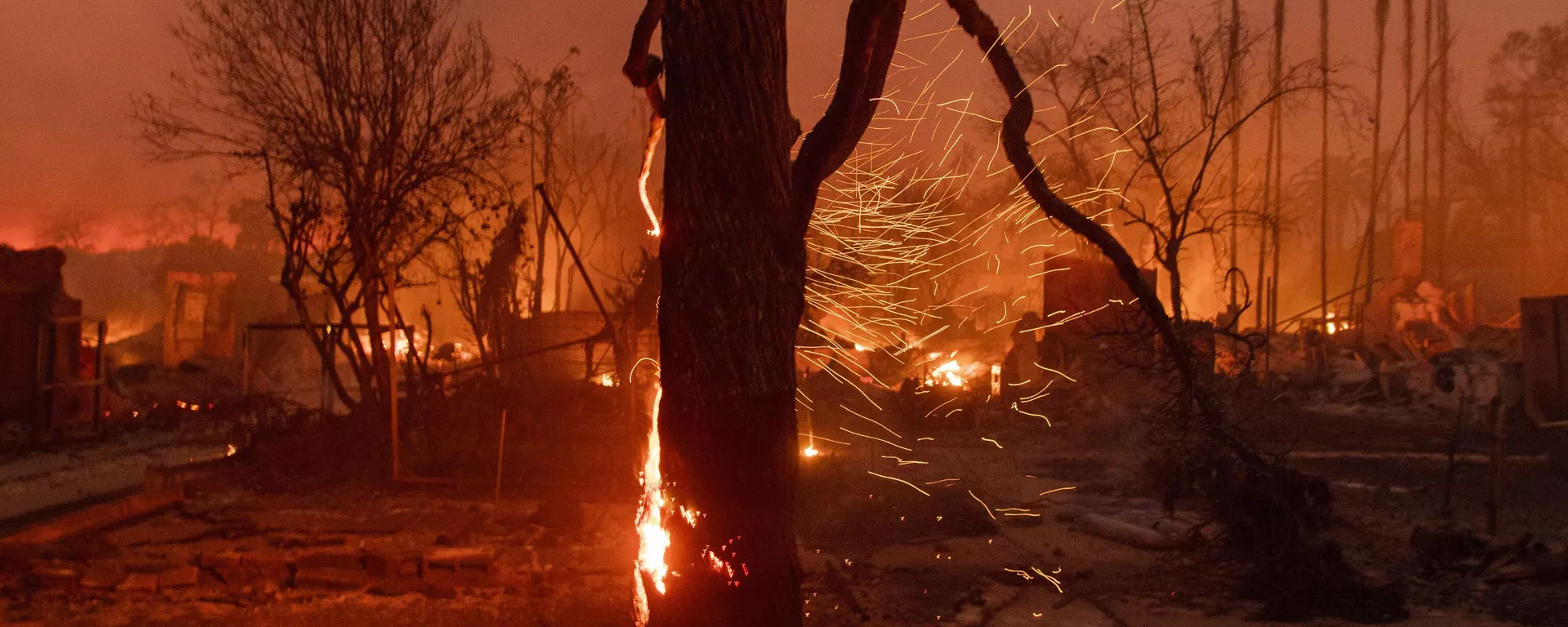The interplay of external forces mirrors broader trends of rivalry among major powers, increasing the likelihood of a large-scale conflict
In recent days, northern Syria has witnessed intense fighting, marking the most violent clashes since March 2020, when a ceasefire was brokered with the involvement of Russia and Turkey. On the morning of November 27, anti-government groups launched an offensive in the Aleppo and Idlib provinces. According to media reports and the Syrian Observatory for Human Rights (SOHR), the operation involves Islamist factions, including Hayat Tahrir al-Sham (HTS), a group banned in Russia, as well as armed opposition forces such as the US and Turkish-backed Free Syrian Army.
By the morning of November 28, opposition forces declared the capture of about a dozen settlements, including strategically significant areas such as Urm al-Sughra, Anjara, and Al-Houta, located west of Aleppo. Additionally, they claimed to have seized the 46th Brigade Base, the largest military base of the Syrian army. Rebel sources reported capturing five tanks, an infantry fighting vehicle, and a stockpile of missiles. On the same day, insurgents conducted a precision strike on a helicopter at the An-Nayrab airbase. Reports from Anadolu and CNN indicated that key positions, including Kafr Basma, Urum al-Kubra, and several strategic highlands, fell under rebel control.
On November 28, the group Al-Fateh al-Mubin announced the capture of Khan al-Assal, located just 7 kilometers from Aleppo, along with ten tanks. The rebels claimed that panic and declining morale were spreading among President Bashar Assad’s forces. Meanwhile, the offensive also advanced south and east of Idlib, a rebel stronghold since 2015. The rebels reported taking Dadikh and Kafr Batikh, near the vital M5 highway.
Over the course of three days, militants reportedly captured at least 70 settlements, spanning approximately 400 square kilometers across both provinces. By the evening of November 29, some participants in the operation even declared the capture of Aleppo, Syria’s second-largest city. They stated their mission was to “liberate the city from the cruelty and corruption of the criminal regime,” aiming to restore dignity and justice to its people.
Al-Fateh al-Mubin launched a Telegram channel to document the operation, named “Deterring Aggression.” The channel has been cited by leading international and regional media outlets. According to the militants, their offensive was a response to alleged intensified airstrikes by Russian and Syrian forces on civilian areas in southern Idlib, as well as anticipation of potential Syrian army attacks.
Why has the conflict gained new momentum?
Before the current crisis, the Idlib province had remained the last major stronghold of armed opposition to Assad’s government throughout the Syrian conflict. The region became a focal point of overlapping interests among various local and international powers, creating a volatile and tense environment.
In 2017, as part of the Astana peace process, Russia, Turkey, and Iran agreed to establish de-escalation zones, with Idlib designated as one of them. The purpose of these agreements was to reduce the intensity of hostilities and create conditions for a political resolution. However, the ceasefire was repeatedly violated, and military operations persisted, escalating the conflict. The growing influence of radical Islamist groups, such as Hayat Tahrir al-Sham (HTS), complicated dialogue between the parties, as many of these organizations were excluded from negotiations and classified as terrorist groups.
Turkey, driven by strategic interests and concerns over a new wave of refugees, increased its military presence in Idlib. It supported certain opposition forces and established a network of observation posts, occasionally leading to direct confrontations with the Syrian army and straining relations with Russia. This added another layer of complexity to an already fraught situation, fueling further clashes.
The humanitarian situation in Idlib continued to deteriorate. Ongoing hostilities triggered a large-scale humanitarian crisis, displacing millions of people, many of whom became refugees in neighboring countries or were displaced internally. A lack of adequate humanitarian aid and worsening living conditions heightened tensions and eroded trust in authorities. This created fertile ground for radicalization, driving recruitment into armed groups.
Idlib’s strategic significance was also a key factor. The province’s location at the intersection of critical transport routes and its border with Turkey gave it both military and economic importance. Control over this territory became a priority for all parties involved, intensifying the struggle and hindering progress toward a peaceful resolution.
The radicalization of the opposition and the presence of extremist elements within its ranks further complicated prospects for peace. These groups had little interest in negotiations and sought to prolong armed conflict, undermining international efforts to stabilize the region. Simultaneously, internal challenges facing the Syrian government, such as economic difficulties, international sanctions, and domestic divisions, weakened its position. This likely prompted the government to pursue more aggressive military action to consolidate control and project strength.
Thus, the current escalation in Idlib stems from a complex interplay of geopolitical interests, internal divisions, opposition radicalization, and severe humanitarian issues. Resolving the crisis requires coordinated international efforts, including active dialogue involving all stakeholders, humanitarian initiatives to alleviate civilian suffering, and a political settlement that considers the interests of various groups and promotes sustainable peace. Without a willingness to compromise and collaborate, the conflict in Idlib risks further escalation, posing a threat to regional stability and international security.
Who is behind the escalation?
While many speculated that Turkey could be a beneficiary of the recent escalation – seeking to pressure Assad into normalizing relations between Ankara and Damascus –Turkey’s official stance remained ambiguous. Statements and comments from Turkish authorities were contradictory: on the one hand, Ankara appeared to provide undeniable support to Assad’s opponents; on the other, it seemed reluctant to take responsibility for the unfolding events and expressed clear frustration with the actions of the Idlib-based “opposition.”
Turkey faced a critical decision: either continue to support the outdated status quo, potentially harming both itself and the region, or, in line with its public declarations of a desire to restore ties with Damascus and its commitments under the Astana process, assist its partners – Russia and Iran – as well as neighboring Syria in resolving the situation in Idlib.
There are also suggestions that the current escalation could have been orchestrated by external actors such as Israel and the US. The flare-up began shortly after a ceasefire between Israel and Hezbollah and a week following reports of Western long-range missiles being used in strikes deep within Russian territory, along with Russia’s retaliatory test of the Oreshnik missile system. It is possible that the US and Israel, leveraging the situation in Ukraine, tensions with Iran, and Ankara’s anti-Israel stance and refusal to join anti-Russian sanctions, instigated unrest in Syria to achieve several objectives.
One such objective might have been to deny Iran and its allies in the Levant a respite, opening a new “front” against Tehran and sowing discord between Tehran and Ankara. Additionally, it could have been aimed at increasing the strain on Russia’s Aerospace Forces supporting Damascus, thereby diverting Russian resources amid its involvement in Ukraine. The West may have sought to further weaken Russia’s position, possibly hoping to open a “second front” against Moscow with the expectation of achieving gains in Syria.
For Damascus, the escalation might have served as a pressure tactic to dissuade its support for Hezbollah and its involvement in the anti-Israel front. It may also have aimed to prevent normalization with Turkey and the formation of a unified anti-Kurdish (and thus anti-American) coalition involving Moscow, Tehran, Ankara, and Damascus east of the Euphrates.
As for Turkey, the situation could have been used to exert pressure by threatening a new wave of refugees, heightened security instability, and worsening economic conditions. This would complicate Ankara’s operations against Kurdish forces in Syria, hinder normalization with Damascus, and strain its relations with Russia and Iran.
Thus, it is plausible that the current escalation in Idlib was initiated by Israel and the US, aiming to further weaken Iran and create rifts in Russia-Turkey relations. This underscores the multilayered nature of the Syrian conflict, where external actors exploit regional tensions to advance their strategic interests. The situation highlights the need for clear political positions and coordinated actions by regional powers to address Syria’s challenges and ensure stability in the region.
The war in Idlib: A harbinger of potential global catastrophe
The escalation in Syria’s Idlib province transcends the bounds of a localized conflict, serving as a stark warning of global instability. The northwest of the country has become a battlefield where the interests of global powers converge, and the intensifying violence reflects the deep fractures in the current world order. The involvement of numerous external players pursuing their own agendas has turned the region into a microcosm of geopolitical contradictions, potentially foreshadowing a broader global crisis.
The resurgence of long-standing conflicts, such as Israel’s military actions in Gaza and Lebanon, amplifies tensions on the international stage. These seemingly dormant or controlled confrontations are reigniting with renewed intensity, posing threats to regional and global stability. The revival of these underscores the inability of existing mechanisms to effectively prevent escalation and address the underlying causes of discord.
Global tensions are nearing a critical tipping point, as many “frozen” conflicts begin to “bleed.” The old world order, built on principles and institutions shaped during the last century, is proving inadequate to meet the challenges of globalization, technological progress, and shifting power dynamics. International organizations and agreements frequently falter in the face of contemporary threats, whether terrorism, cybersecurity, or hybrid warfare.
Constructing a new world order requires a rethinking of existing structures and, perhaps, dismantling outdated approaches. This transition is inherently fraught with conflict, as the shift from the old to the new is rarely smooth. Competing powers and blocs are striving to safeguard their interests, heightening the risk of confrontation unless a common understanding and mutual trust can be established.
The situation in Idlib epitomizes this painful transitional phase. It highlights how regional conflicts can escalate into global crises if left unresolved. The interplay of external forces in Syria mirrors broader trends of rivalry and mistrust among major powers, further increasing the likelihood of a large-scale conflict.
In conclusion, the escalation in Idlib and other global hotspots serves as a warning that the world is on the brink of profound change. To avoid sliding into a global conflict, the international community must work collaboratively to establish a new, more resilient world order capable of addressing modern challenges. This requires dialogue, compromise, and a willingness to overcome old divisions for the sake of a shared future.

 1 month ago
12
1 month ago
12










 We deliver critical software at unparalleled value and speed to help your business thrive
We deliver critical software at unparalleled value and speed to help your business thrive






 English (US) ·
English (US) ·